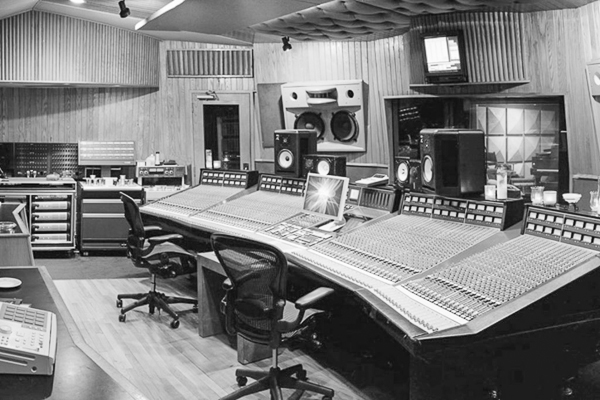
For prestigious architect and acoustician John Storyk, his journey into recording studio design began in 1968 when he was asked an enticing question: “Do you want to build a club for Jimi Hendrix?”
At 22 years old, Storyk’s answer was a resounding “yes.”
However, things did not go to plan. At the last minute, Hendrix’s producer Eddie Kramer talked him out of creating a club and convinced Hendrix and his manager that they should build a recording studio instead.
Storyk was kept on the project and became the lead designer for the recording studio. With the help of Eddie Kramer, Phil Ramone and Storyk’s expertise in architecture, Electric Lady Studios was born.
Storyk spoke about the lessons he learned from the building of the Greenwich Village recording studio and what makes a great recording studio in a thorough presentation on Saturday, March 28 in the Lecture Center.
“This is a good career lesson, if you have a first project: make it a famous one,” Storyk said.
Fast forward to 2015 and Storyk now runs Walters-Storyk Design group with his wife Beth Walters, an architectural acoustics, audio visual and technology integration design firm which creates recording studios and performance venues all over the world.
Storyk and his firm have helped create and assist with over 3,000 recording studios, as well as musical and religious venues and educational facilities.
Electric Lady Studios is still operating to this day, and has been used by famous artists including Kanye West, Stevie Wonder, Led Zeppelin, The Rolling Stones, The Strokes and many more.
Electric Lady Studios took about a year to build, although Storyk said construction on the studio was not consistent.
“Whenever they ran out of money, they would stop building it, Jimi would go out and play and they would come back with satchels of cash,” Storyk said.
Storyk designed the studio specifically to Hendrix’s liking. He designed the control room so it would have full ambient lighting, including different colored lights on the ceiling. Hendrix felt that the studio needed to be an extension of the artist, and also wanted to keep some elements of the club in the design of the studio. Despite these personalized touches, Storyk was still able to build the studio to commercial specs.
The large and spacious control room was designed to be stylish and comfortable. Most control rooms before that time were small, uncomfortable and almost never used by the artists.
“This was a room for artists and engineers. Artists would hang out in this room, they would no longer be hostage on the other side of the glass,” Storyk said. “This is really one of the first moments where that’s happening.”
Although Electric Lady Studios’ current-day control room is different than it was in 1970, the studio has not changed much, a testament to the fact that the original designs really did work.
Electric Lady Studios laid down the groundwork for modern recording studios at a basic level, but the science of control room acoustics has advanced a great deal in the past 40 years.
Storyk discussed modern architectural acoustics, such as interior space acoustics, the science of changing a room’s surfaces in order to achieve better sound.
Storyk’s group has many ways to fix acoustic issues, such as covering panels with fabric in order to raise acoustical absorption and erecting diffusers which scatter sound. Storyk’s group can predict what a building’s acoustics will be like without even erecting it.
Thanks to a program called CATT-Acoustics, they create a model of the building and can accurately estimate the reverberation time and other acoustic factors. Thanks to this technology, they know exactly how a building will sound before they build it, which means less problems to fix later on.
The Walters-Storyk Design Group is a nine-time winner of the TEC Award for outstanding achievement in Acoustics/Facility Design. They are still designing studios around the world today.
